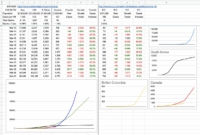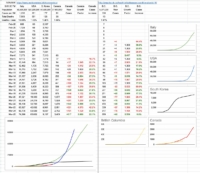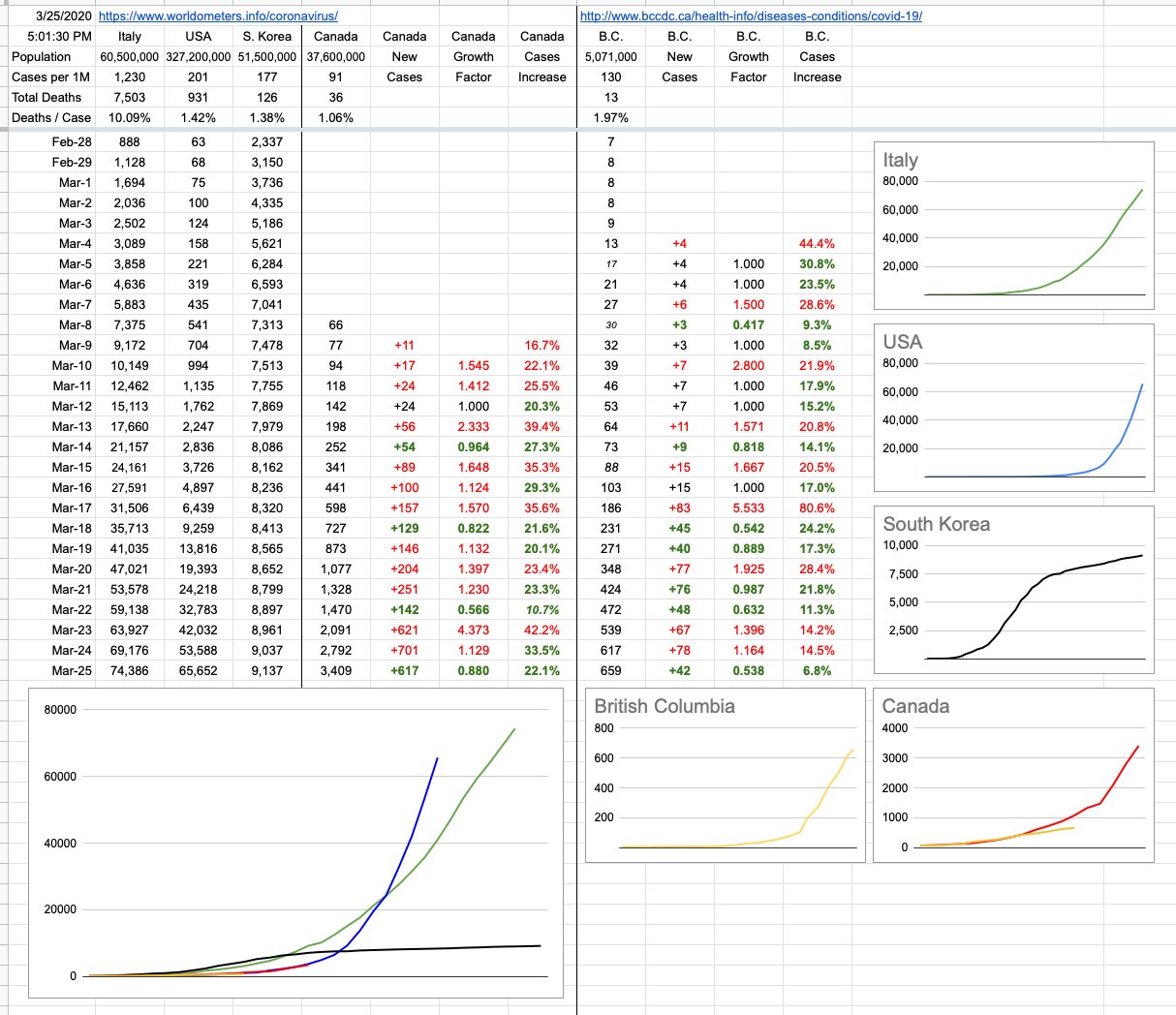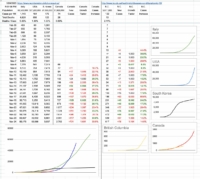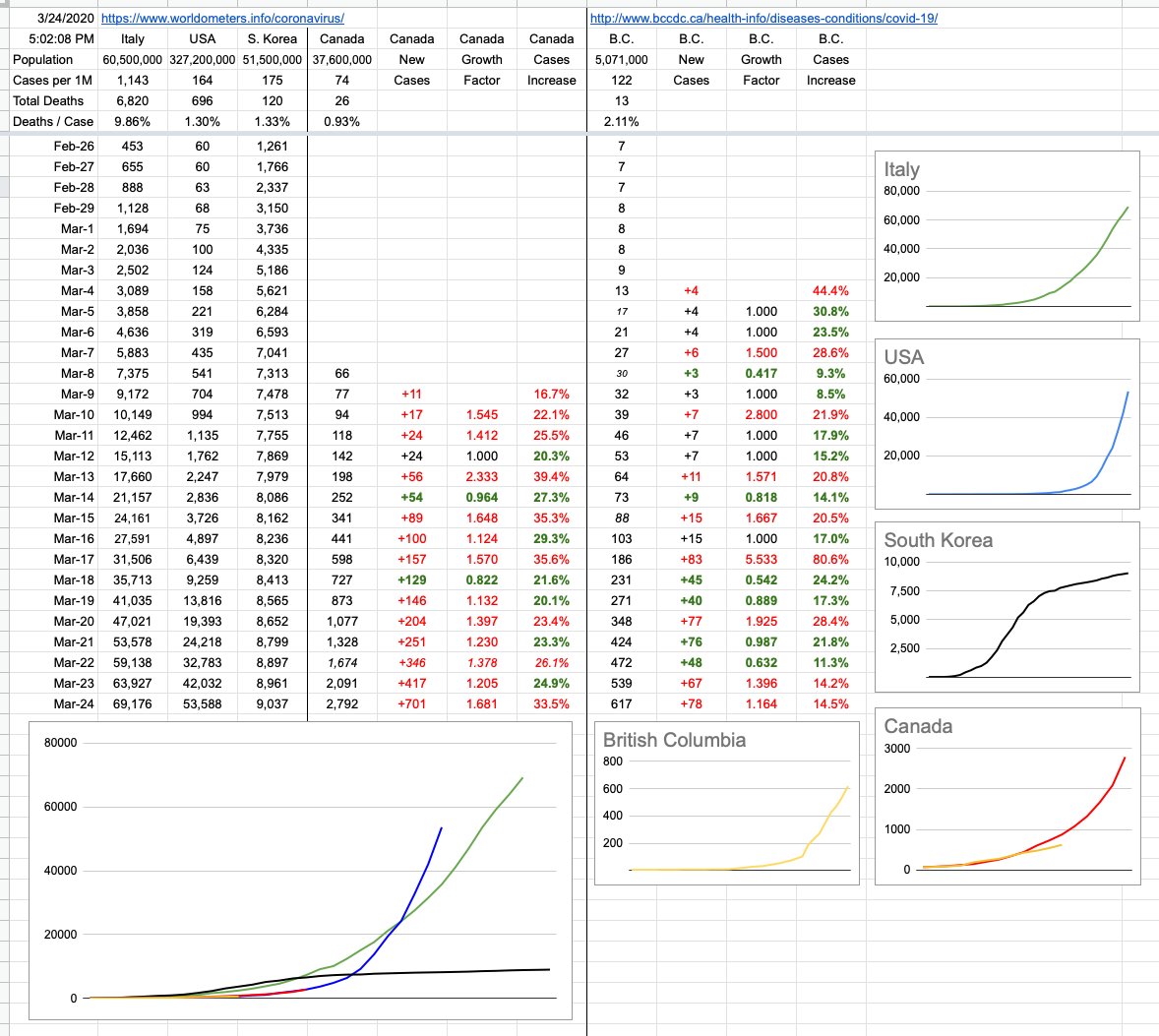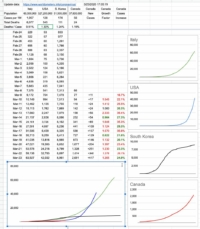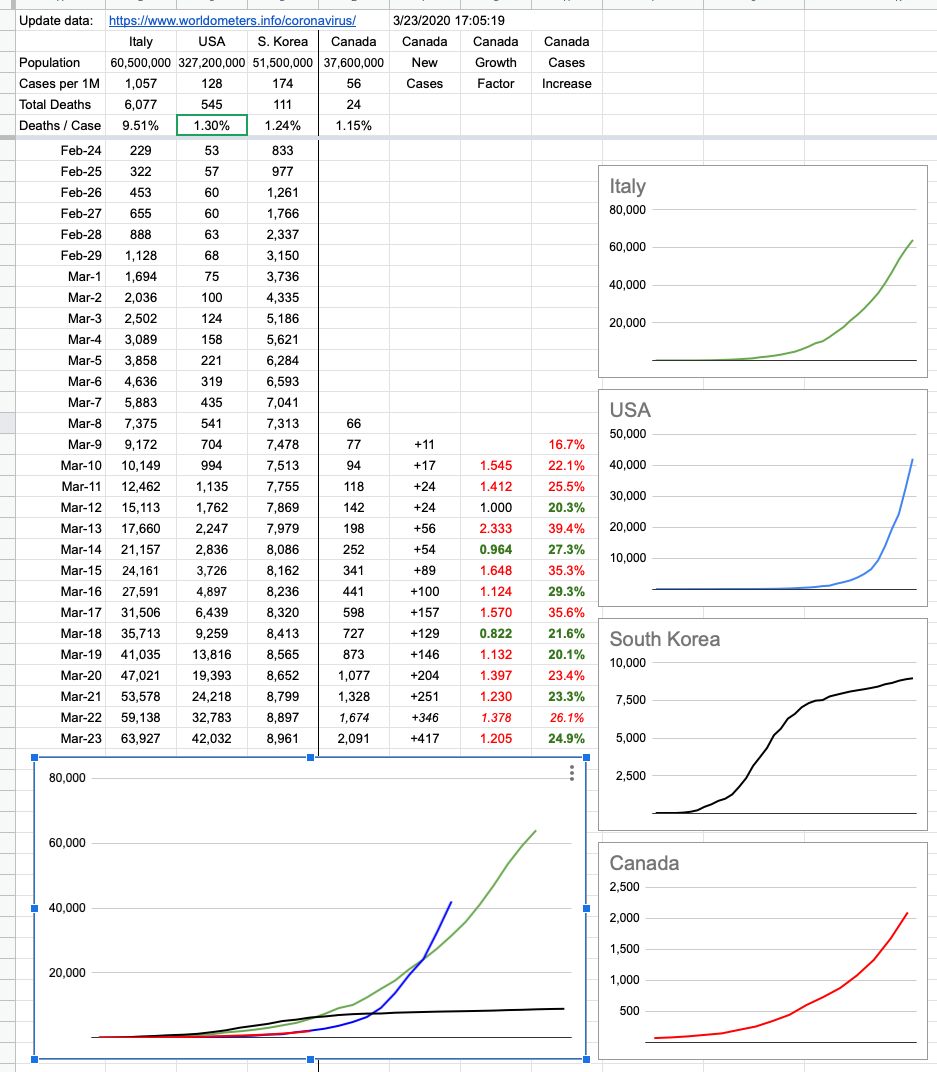Share...
Day 11 – March 27, 2020
To circle back a bit on something I said yesterday… with a bit more detail…
The incubation period of a virus (which is up to 14 days in this case) indicates the period of time where someone might be infected, but not show any symptoms. Some viruses can be contagious during that time… as is this one.
In B.C., we were told to go home (and stay home) sometime around March 16th — 11 days ago. It was a bit of a loosey-goosey following to begin with… but it tightened up a few days later… 19th or 20th. Let’s call it 8 days ago.
With an incubation period of max 14 days… and without a serious lockdown until 8 days ago, we have a trailing 6 days where we were all going about our daily business, feeling fine and possibly not too concerned about the possibility of either passing this off or getting this from — someone else. Unfortunately, during that time, both of those things could have happened.
Which means, at this moment, we have this big unknown for the next 6 days… where we might see a spike in cases. The degree of that spike remains to be seen. That’s the potentially bad news.
The potentially good news, however… is that not all cases take to the last minute to show up, so we can learn a bit about what’s happened so far. During these 8 to 11 days of isolation, cases have certainly shown up… and our (for the moment, and hopefully forever) very capable medical infrastructure has been dealing with them.
Also, every single case that developed during that time in (proper) isolation, infected, at most, the people isolated around them. Let’s say that person is isolated in a home with 2 others. The N went to, at most, 3N.
What would have happened if that person were wandering around, not isolated?
R0 (“R nought”) is the number assigned to describe on average how many people someone who’s infected is likely to themselves infect. COVID-19 seems to have a R0 of around 2.2.
So… that one person, instead of infecting just those closely around them, might be outside somewhere infecting 2 or 3 random people. And those people might each infect more people. And if that’s happening every few days, after 3 weeks, that’s repeated … [Continue Reading]
Day 10 – March 26, 2020
Fun fact: Both South Korea and the U.S. reported their first case of COVID-19 on the same day: January 20. The present-day outcomes are so different that it’s worth understanding what they did (or didn’t), and where our approach, provincial and national, fits in.
The answers are long and complicated and will be discussed and argued for centuries, but it can all be distilled down to one brief and accurate summary: South Korea did a lot; the United States did not.
One thing South Korea did was test the hell out of this thing, as far and wide as they could. They developed and administered thousands of tests almost instantly — like a week — and were quick to isolate those that tested positive. The U.S.… didn’t. They stuck their heads in the sand for a bit, called it no big deal, and did little except stop incoming flights from China… but as far as I know, the COVID-19 virus is not a member of any particular frequent-flyer club. It doesn’t care what airline it flies, nor where the flight originated. Once it’s on the plane and headed somewhere, it’s landing and it’s sticking around.
It was initially thought that community transmission wasn’t a concern… the U.S. thought it, we in Canada (and here in B.C) thought the same; we will find cases, we will isolate them, the cases will resolve and it shouldn’t be a big deal. The risk to you and me is low. A month ago, there were only 7 cases in BC, and all of them could be traced to close contact.
South Korea’s initial jump of cases had a lot to do with their prolific testing, but what comes after is what’s worth noting. Their impressive flattening of their curve has everything to do with their reaction… isolate. And when it became apparent that community transmission was indeed happening, that’s the only reasonable course of action: Social/Physical distancing.
Since our testing hasn’t reached everyone, and since we don’t yet have antibody tests that would tell us who’s already had it, the only reasonable course of action is to pretend everyone has it, and act accordingly. Indeed, the way to think about it isn’t to assume everyone has it… and keep away. It’s to assume you have it, and … [Continue Reading]
Day 9 – March 25, 2020
At some point, we are all having “one of those moments” these days… it can last a minute… or an hour… sometimes, all day. The first thing I do when I update these charts every day is to enter the date, and today, when I entered Mar-25, I had one of those moments.
Seeing that date reminded me… that in some non-pandemic-infested parallel universe somewhere, the Canucks are playing the Sharks tonight, and I have tickets to the game.
I was really looking forward to it… because it was bound to be an exciting game. This is exactly the time of year when we’re typically fighting for a playoff spot, and usually, it’s a situation like the Canucks have to beat the Sharks, but also, the Ducks have to beat the Flames. And it’d really help if the Avs could beat the Oilers, just in case we lose, because then, next game, yada yada…
All of that occurred to me because… wow, do I miss that. I would so much rather be doing that sort of math… than this.
But here we are, so let’s look at these numbers… and hope that one day soon, all of us can get back to the things that feel so incredibly far away right now.
And, for what it’s worth, today was a good day. BC had a good day, and Canada overall did as well.
That yellow BC line looks good… for now. That will change in the coming days, and Dr. Henry was asked about how many cases she thinks are out there, as opposed to just confirmed cases. She will discuss it Friday morning, with some detail on the modelling they’re using to arrive at these estimates. There is a big difference between confirmed cases and actual cases… how big remains to be seen. But at least today, around here, it was a sunny day in many respects.
View Original Post and All Comments on Facebook
Day 8 – March 24, 2020
As is often the case with us here in BC, the Wild West of Canada, we’re not always in sync with the rest of the country… and since the majority of people reading this are in BC, I’ve added a whole new set of data and graph… which is us… British Columbia.
I haven’t been following closely other province’s responses. Nationally, yes. BC, yes. But I’m not sure when Ontario or Quebec locked things down, nor the manner in which they did it. The reason that’s relevant is that while we’re seeing some not-so-great numbers out of Quebec today, the last few days here in BC paint a better picture.
We’re still over a week away from seeing the direct impact of the social-distancing order, and numbers will indeed increase between now and then… but the manner in which they increase is important, and for the moment, at least around here, it looks pretty good. The growth is linear, not exponential. At least for now. It’s evident in the BC graph, and it’s very evident when compared to the rest of Canada, which overall continues to pretty accurately track where the US was 10 days ago.
View Original Post and All Comments on Facebook
Day 7 – March 23, 2020
The lack of data over the weekend left a bit of a gap… which I filled in with some guesswork. I know where we were on Saturday, and I know where we are now. How we got here looks to be pretty consistent, but the next few days are more important than the last few. We are tracking very closely to the US, trailing by 10 days… just before things started getting really out of hand down there.
It’s important to note that I’m tracking new cases — not active cases. It was good news to hear that 100 cases in BC considered active have been resolved to “cured”. More than 300 in Canada overall.
As time goes on, we can look forward to that number of resolved cases growing, but note that its growth doesn’t affect tracking new cases. Those will always go up. In fact, at some point, it’s (hopefully) likely we will have “negative” days — where there are less new cases than resolved cases… but the idea of these graphs is to simply track the spread (and control) of new cases. What we do with them is a whole other question, and I’ll be happy to offer my opinion on that as time goes on. So far, comparing it to what’s going on elsewhere in the world, it’s pretty good. And will gradually look a lot better if you all just #stayhome!!
View Original Post and All Comments on Facebook


